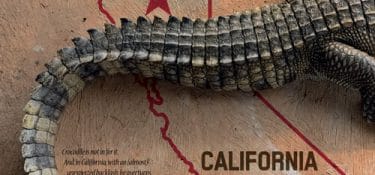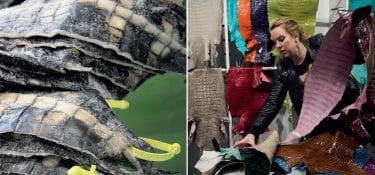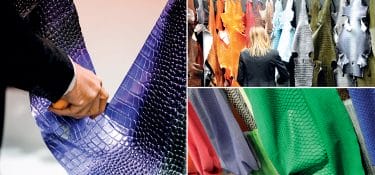He is called Matomo Nitta and in his hands resides the millenary art of making a white leather that “in contact with the human skin has the effect of a moisturizing cream”. We are going to tell you how in this article
By Massimiliano Viti
The Japanese city of Himeji (over half a million inhabitants) is famous above all for its Castle that Unesco has included since 1993 among the sites of the World Heritage. In the surrounding area, located in the prefecture of Hyōgo, there is a flourishing leather industry whose origins date back to when immigrants arriving from Korea brought with them their skills as tanners. In fact, the area was particularly suitable for processing leather.
There is the Ichikawa river that flows slowly on a rather large bed. There is a warm and little rainy climate. Then, a non-negligible detail, the area is particularly rich in cattle breeding. And finally, Himeji is in a favourable position also for the sale of finished leather, given that Osaka and Kyoto are not very far away.
(Historical) result: the area soon became famous throughout Japan for its tanning and increased its fame at the time of the samurai for whom leather was priceless. The local tanning economy reached its greatest development between 1951 and 1963 before entering a slow decline, caused by the advent of increasingly modern machines and tanning processes.
After having lasted over 1,000 years, today the recipe for white leather is applied to the letter only by one person: Matomo Nitta who uses neither machinery nor chemicals.
But how does this millennial tanning process take place? The steps to follow are many and each must be observed with extreme care and meticulousness. The tanning process requires salt, rapeseed oil and Ichikawa river water. Raw leather from Japanese cattle farms is immersed in the river for a few days, allowing the microorganisms to weaken the hair roots. Then it is shaved with a knife and processed to be given a uniform thickness. It is then sprinkled with salt (in a quantity equal to 11% of its own weight), folded on itself and placed inside a bucket. It is pounded with feet (a process similar to that of crushing grapes) and left 48 hours before being dried (in winter it takes over 10 days, in summer a couple days is enough, in spring and autumn 5/6). When salty leather is dry enough, it is rinsed and hung overnight. Then it is stretched barefoot. now it’s ready for the most delicate phase: the appliance, on the back, of rapeseed oil. Then it is massaged, both with bare feet and with a spatula anchored to the ground. It is left to dry, excess dirt and salt is removed, immersed again in the river in order to permanently eliminate the salt. The finishing work proceeds until the leather is fixed while waiting for it to dry. After this long procedure (it takes 2 to 4 months) a natural white coloured leather is obtained, “with a resistance and softness different from any other leather”, is said in Japan. “This leather, in contact with human skin, is similar to a moisturising cream. Furthermore, it is water repellent” explained to us at Pitti uomo last January stylist Akasaka Kozaburo, 34 years old, winner of the Special Award at the LVMH Prize 2017, one of the four designers who presented the Japanese White Leather Project at the event in Florence, a project aimed at recovering and enhancing Japanese tanning tradition. Kozaburo made a $4,000 jacket, Ryo Midorikawa was in charge of making the shoes, while the other white leather products were made by Satoshi Ezaki and Ryuki Yamaka.











